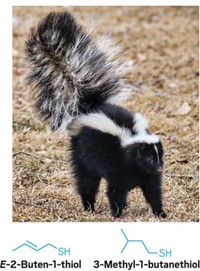Advertisement
Grab your lab coat. Let's get started
Welcome!
Welcome!
Create an account below to get 6 C&EN articles per month, receive newsletters and more - all free.
It seems this is your first time logging in online. Please enter the following information to continue.
As an ACS member you automatically get access to this site. All we need is few more details to create your reading experience.
Not you? Sign in with a different account.
Not you? Sign in with a different account.
ERROR 1
ERROR 1
ERROR 2
ERROR 2
ERROR 2
ERROR 2
ERROR 2
Password and Confirm password must match.
If you have an ACS member number, please enter it here so we can link this account to your membership. (optional)
ERROR 2
ACS values your privacy. By submitting your information, you are gaining access to C&EN and subscribing to our weekly newsletter. We use the information you provide to make your reading experience better, and we will never sell your data to third party members.
Biological Chemistry
Some Mouth Microbes Battle Dental Plaque
Besides bacteria that cause cavities and gum disease, the mouth is home to bacteria that produce tooth-friendly enzymes
by Sarah Everts
March 28, 2011
| A version of this story appeared in
Volume 89, Issue 13
Many of the hundreds of species of bacteria living on your teeth build biofilm communities that become cavity- and gum-disease-causing plaque. Yet new research reveals that your mouth also contains some tooth-friendly bacteria that produce biofilm-busting enzymes. Researchers led by Hidenobu Senpuku of Japan’s National Institute of Infectious Diseases found that Streptococcus salivarius and several other saliva bacteria produce enzymes, including a fructosyltransferase and an exo-β-d-fructosidase, which inhibit biofilm formation in the mouth after sucrose consumption (Appl. Environ. Microbiol., DOI: 10.1128/AEM.02066-10). The team suggests that this inhibition occurs because the enzymes interfere with polysaccharide production by S. mutans, an infamous mouth bacterium known to be a culprit in cavity formation. After brushing your teeth, S. mutans likely uses sucrose-based polysaccharides to build biofilms that lead to plaque. Given the biofilm-thwarting properties of the enzymes, toothpaste makers may consider including them in future formulations.





Join the conversation
Contact the reporter
Submit a Letter to the Editor for publication
Engage with us on Twitter